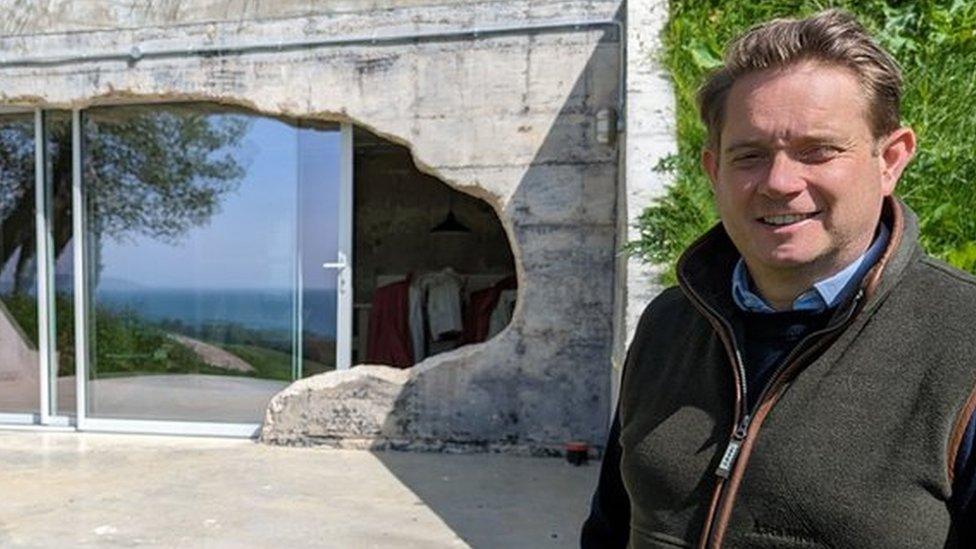Steamer Point: Signs reveal top-secret history of seaside location
- Published

Steamer Point was the site of nationally-important research
Visitors to a coastal beauty spot can learn about the area's military past following the installation of signs at what remains of a former radar station.
Steamer Point, near Christchurch in Dorset, was once a site for secret research into military radar and satellite communications.
All that remains are three concrete bases that supported three huge aerial dishes, near the existing car park.
New signs installed near the bases will explain their historical significance.
The radar site was established at Steamer Point, off Seaway Avenue, at the start of World War Two for research into military radar by the Air Defence Experimental Establishment (ADEE), which was also based at Somerford.
In 1943, ADEE was moved to Worcestershire, and the sites were taken over by the Signals Research and Development Establishment (SRDE) to conduct groundbreaking research into military communication systems.

The concrete bases are all that remain of the aerial dishes
From the 1960s this included Britain's Skynet, the world's first geostationary satellite system for secure military communications.
Three circular concrete bases, from a 40-foot-wide aerial dish and two smaller dishes, can still be seen close to Steamer Point car park.
The facility also conducted research into mine detection, night-vision systems and fibre-optic communication techniques.
Paul De Jonghe, vice-chair of the Friars Cliff Residents Association, said: "Around the area, military research work was conducted of national and international importance.
"Many people will be unaware of this, and we hope the new signs will help people appreciate the significance of the work they did."
The new signs were funded by developer contributions, via Bournemouth, Christchurch and Poole Council.
The money has also paid for new nature sculptures and wayfinding markers as part of an educational walk in the nearby Steamer Point Nature Reserve, stretching from Friars Cliff to Highcliffe Castle

Follow BBC South on Facebook, external, X, external, or Instagram, external. Send your story ideas to south.newsonline@bbc.co.uk or via WhatsApp on 0808 100 2240, external.
Related topics
- Published22 March 2024

- Published9 May 2023
